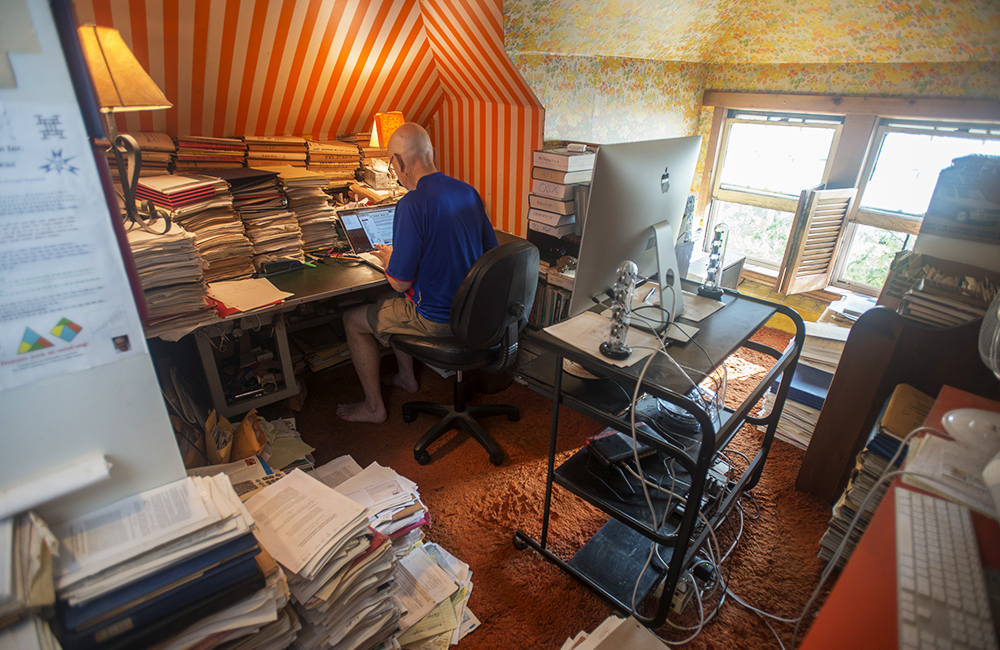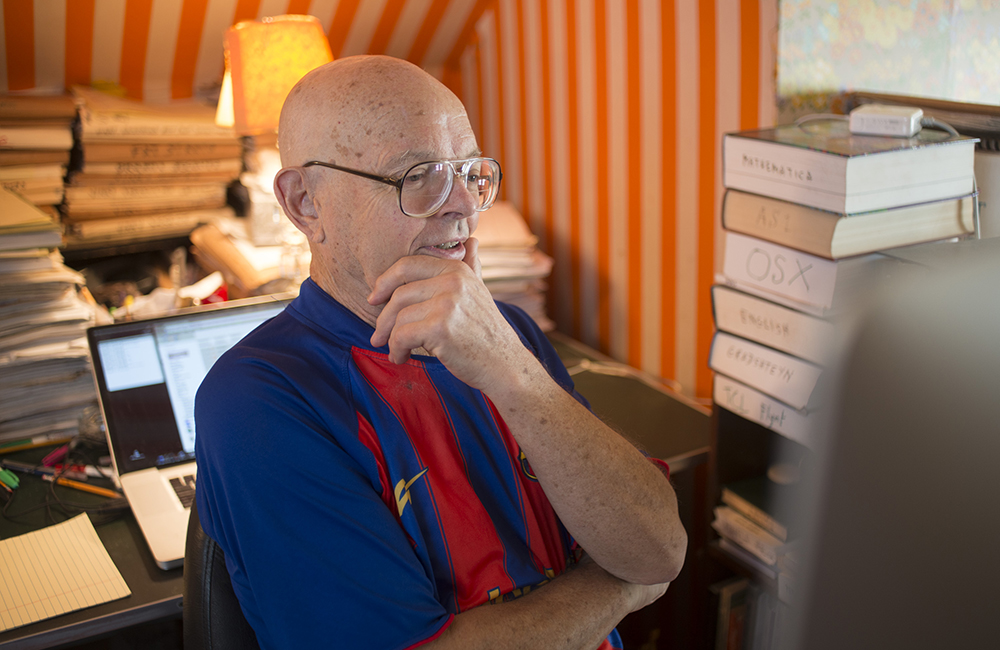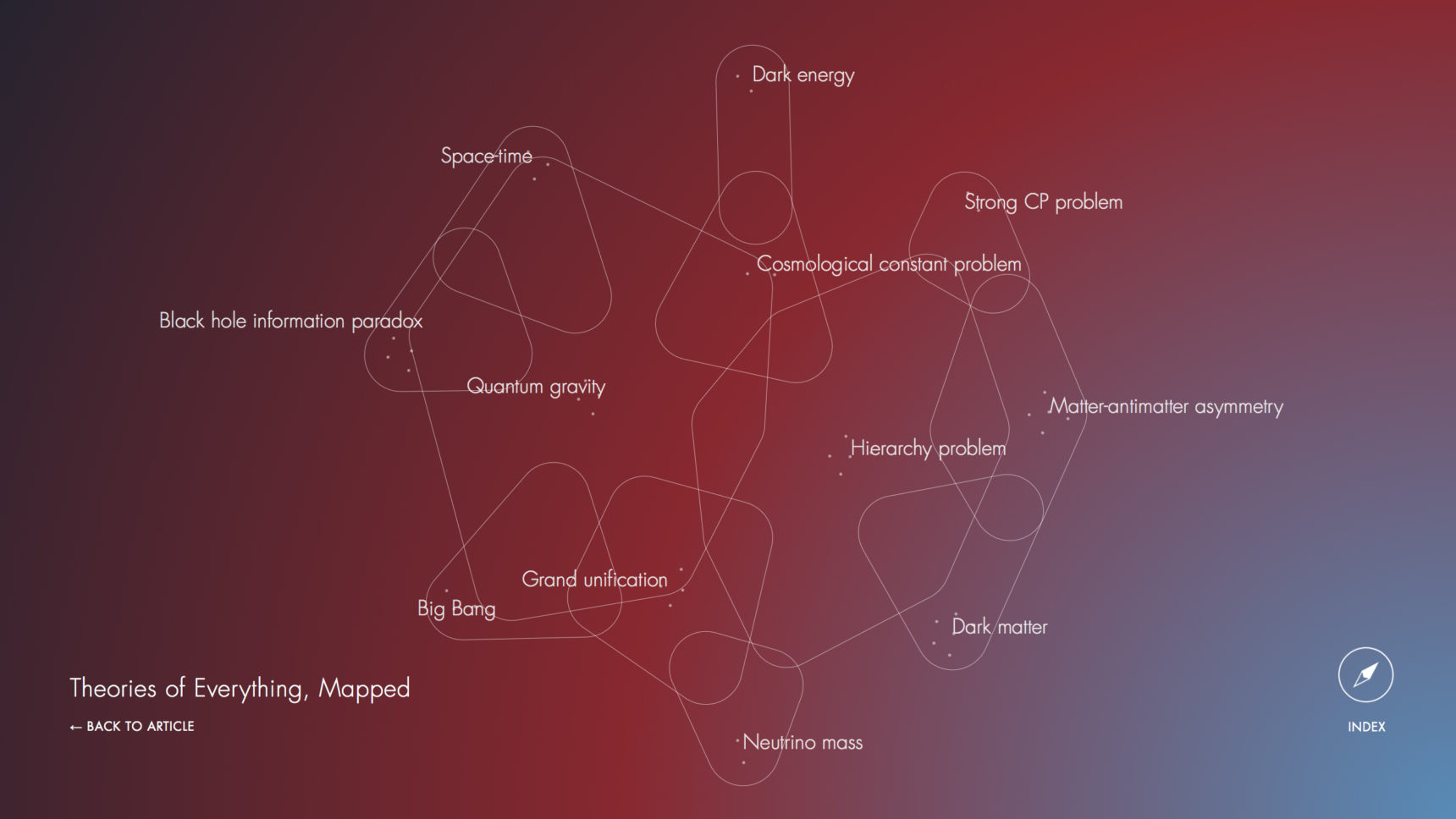The Connoisseur of Number Sequences

Neil Sloane is considered by some to be one of the most influential mathematicians of our time.
That’s not because of any particular theorem the 75-year-old Welsh native has proved, though over the course of a more than 40-year research career at Bell Labs (later AT&T Labs) he won numerous awards for papers in the fields of combinatorics, coding theory, optics and statistics. Rather, it’s because of the creation for which he’s most famous: the Online Encyclopedia of Integer Sequences (OEIS), often simply called “Sloane” by its users.
This giant repository, which celebrated its 50th anniversary last year, contains more than a quarter of a million different sequences of numbers that arise in different mathematical contexts, such as the prime numbers (2, 3, 5, 7, 11 … ) or the Fibonacci sequence (0, 1, 1, 2, 3, 5, 8, 13 … ). What’s the greatest number of cake slices that can be made with n cuts? Look up sequence A000125 in the OEIS. How many chess positions can be created in n moves? That’s sequence A048987. The number of ways to arrange n circles in a plane, with only two crossing at any given point, is A250001. That sequence just joined the collection a few months ago. So far, only its first four terms are known; if you can figure out the fifth, Sloane will want to hear from you.
A mathematician whose research generates a sequence of numbers can turn to the OEIS to discover other contexts in which the sequence arises and any papers that discuss it. The repository has spawned countless mathematical discoveries and has been cited more than 4,000 times.
“Many mathematical articles explicitly mention how they were inspired by OEIS, but for each one that does, there are at least ten who do not mention it, not necessarily out of malice, but because they take it for granted,” wrote Doron Zeilberger, a mathematician at Rutgers University.
The collection, which began in 1964 as a stack of handwritten index cards, gave rise to a 1973 book containing 2,372 sequences, and then a 1995 book, co-authored with mathematician Simon Plouffe, containing just over 5,000 sequences. By the following year, so many people had submitted sequences to Sloane that the collection nearly doubled in size, so he moved it onto the Internet. Since then, Sloane has personally created entries for more than 170,000 sequences. Recently, however, he’s had help processing the torrent of submissions he receives each year from all over the world: Since 2009 the collection has been run as a wiki, and it now boasts more than 100 volunteer editors.
But the OEIS is still very much Sloane’s baby. He spends hours each day vetting new submissions and adding sequences from archived papers and correspondence.
Quanta caught up with Sloane over Skype last month as he sorted through sequences in his attic home office in Highland Park, N.J. Formerly a children’s playroom, its garish wallpaper is tempered by giant stacks of papers, and, as Sloane put it, “enough computers so I don’t need a heater.” An edited and condensed version of the interview follows.
QUANTA MAGAZINE: Tell me how you started the OEIS. Some sequences came up in your research as a graduate student, right?
NEIL SLOANE: It was my thesis. I was looking into what are now called neural networks. These are networks of [artificial] neurons, and each neuron fires or doesn’t fire and is connected to other neurons which fire or don’t fire depending on the signal. I wanted to know whether the activity in some of these networks was likely to die out or keep firing.
Some of the simplest cases gave rise to sequences. I took the simplest one and, with some difficulty, worked out half a dozen terms. [It] goes 1, 8, 78, 944…. I needed to know how fast it grew, and I looked it up in the obvious places, and it wasn’t there.
I started making a collection of sequences, so the next time this came up, I’d have my own table to look up. I made a little collection of file cards, and then they became punched cards and then magnetic tape and eventually the book in 1973.

And when did you start sharing your collection with other people?
Oh, right away. I mean, within a year or two. The word got around, and you know, letters started coming in. And as soon as the book came out, there was a flood of letters. I’m still going through the binders from that period. The project [now] is to sort through all the interesting documents from the past, which now goes back 51 years. A lot of them are in binders. A lot of them are not, unfortunately. Over there, there’s about an eight- or nine-feet stack of papers that haven’t been sorted.
It’s very slow work. I have to go through these 50 binders and figure out what’s worth scanning, what’s worth preserving, what is available online so we don’t need to scan it. But I’m also finding lots of new sequences as I go along, that for one reason or another I didn’t include the first time around.
Besides the books about sequences, you’ve also co-authored two guidebooks to rock climbing in New Jersey.
I did it with my climbing partner, Paul Nick. We spent a lot of time driving around New Jersey climbing on crags and taking photographs and collecting route information. There were a lot of restrictions. A lot of cliffs were on private property, so we couldn’t officially include them in the book.
Do you have any favorite mathematical discoveries that came about because of the OEIS?
One of the most famous discoveries has to do with a formula discovered by Gregory, an astronomer back in Newton’s day, for π/4. The formula says that π/4 = 1 – 1/3 + 1/5 – 1/7 + 1/9 and so on. It’s a good way of computing π if you don’t have any better way. So somebody did this, but wondered what would happen if you stopped after a while. So he truncated the sum after 500,000 terms and looked at the number, and he worked it out to many decimal places. He noticed, of course, that it was different from π.
He looked at where it differed, and it differed after five decimal places. But then it agreed for the next ten places, and then it disagreed for two decimal places. Then it agreed for the next ten places, and then it disagreed. This was absolutely amazing, that it would agree everywhere except at certain places.
Then I think it was Jonathan Borwein who looked at the differences [between π and the truncated sum]. When you subtract you get a sequence of numbers, and he looked it up in the OEIS, and it wasn’t there. But then he divided by 2 and looked it up, and there they were. It was sequence A000364. It was the Euler numbers.
He and his two collaborators studied this, and they ended up with a formula for the error term. If you truncate Gregory’s series after not just 500,000 terms, but after n terms, where n can be anything you want, you can give an exact formula for the error.
It was absolutely miraculous that this was discovered. So, it’s a theorem that came into existence because of the OEIS.
Tell me about some sequences you like. What makes a sequence appealing to you?
It’s a bit like saying, “What makes a painting appealing?” or “What makes a piece of music appealing?” In the end, it’s just a matter of judgment, based on experience. If there is some rule for generating the sequence which is a bit surprising, and the sequence turns out to be not so easy to understand, that makes it interesting.
There’s a sequence of Leroy Quet’s which produces primes. It chugs along, but it’s like Schrödinger’s cat; we don’t know if it exists [as an infinitely long sequence] or not. I think we’ve computed 600 million terms, and so far it hasn’t died. It would be nicer — or maybe it would be less nice — if we could actually analyze it.
How often do you get a new sequence that makes you say, “I can’t believe no one has ever thought of this before”?
This happens all the time. There are many gaps, even now. I fill in these gaps myself quite often when I come across something in one of these old letters. We’re a finite community. It’s easy to overlook even an obvious sequence.
To what extent is there a clear aesthetic about which sequences deserve to be in the OEIS?
We have arguments about this, of course, because somebody will send in a sequence that he or she thinks is wonderful, and we the editors, look at it and say, “Well, that’s really not very interesting. That’s boring.” Then the person who submitted it may get really annoyed and say, “No, no, you’re wrong. I spent a lot of time on this sequence.” It’s a matter of judgment, and in the end I have the final say. Of course, I’m very influenced by the other editors-in-chief.
One of our phrases is, “This is too specialized. This is too arbitrary. This is not of general interest.” For instance, primes beginning with 1998 would not be so interesting. Too specialized, too arbitrary, so that would be rejected.
It might not be rejected if it had been published somewhere — if it was on a test, say. We like to include sequences that appear on IQ tests. It’s always been one of my goals to help people do these silly tests.
One of the features on the OEIS is the option to listen to a sequence musically. What do you think that adds?
Well, it’s another dimension of looking at the sequence. Some sequences, you get a good feeling for them by listening to them. Some of the sequences almost sound like music. Others just sound like rubbish.
You’ve said that you think Bach would have loved the OEIS.
I think music is very mathematical, obviously, and so he would have appreciated the OEIS. He would have understood it. He probably would have joined in, contributed some sequences. Maybe he would have composed some pieces that we could use.
Do you have a sense of the magnitude of the OEIS’ impact?
Not really. I know it’s helped a lot of people, and it’s very famous. We have sequence fans from all over the world. You’ll see many references from unexpected places to the OEIS: journals, books, theses from civil engineering or social studies that mention sequences. They come up all over the place.
Are there other repositories of mathematical information that you wish existed, but don’t yet?
You would like an index to theorems, but it’s hard to imagine how that would work.
We’re trying to get a collaboration going with the Zentralblatt — the German equivalent of Math Reviews’ MathSciNet — about making it possible to search for formulas in the OEIS. Suppose you want the summation of xn over n2 + 3, where the sum goes from one to infinity. It’s very hard to look that up in the OEIS at present.
You’re retired from AT&T Labs, but looking at your list of recent publications and your activity with the OEIS, you seem anything but retired.
I have an office at Rutgers, and I give lectures there, and I have students, and I’m even busier back here in my study running the OEIS and doing research and going around the world giving talks and so on. I’m busier than ever.
There are more than 4,000 people registered on the OEIS website. They range from professional mathematicians to recreational mathematicians, right?
A child just registered the other day, and said, “I’m ten years old, and I’m very smart.” So it’s a wide-ranging group of people all over the world, from many different occupations. One of the things people like about the OEIS is this opportunity to collaborate, to exchange emails with professionals. It’s one of the few opportunities that most people have to talk to a real mathematician.
Do you feel that there is a divide between “serious mathematics” and “recreational mathematics”? Or do you tend not to think in those terms?
I don’t think in those terms. I don’t think there’s much difference. If you look hard enough, you can find interesting mathematics anywhere.
This article was reprinted on Wired.com.



